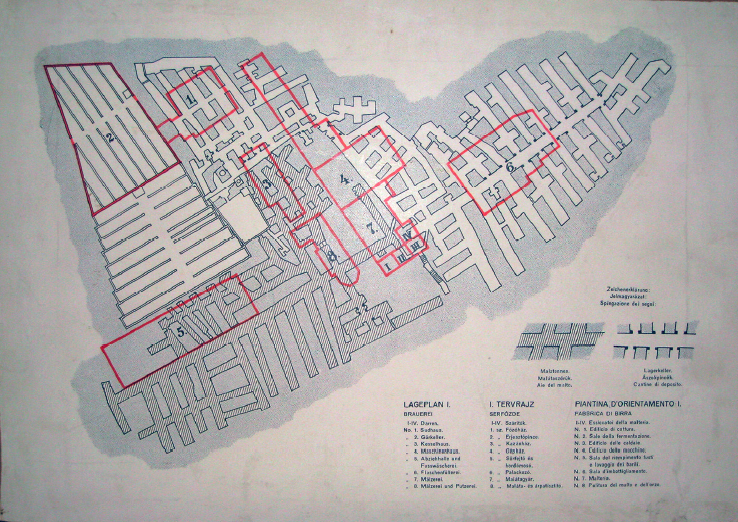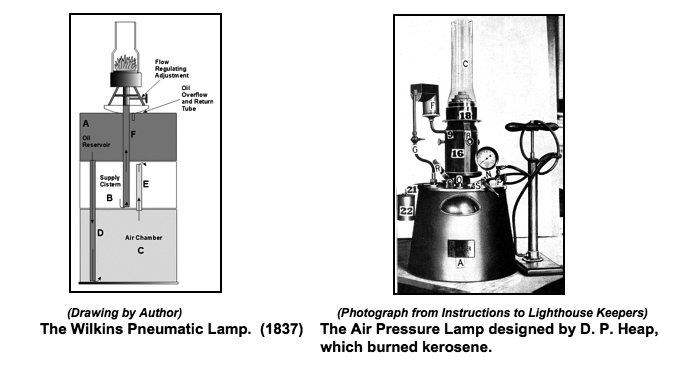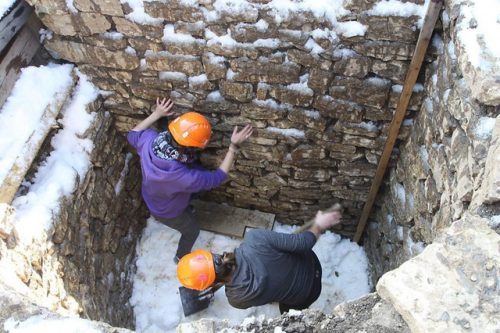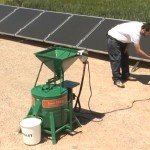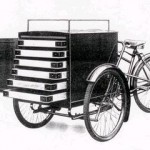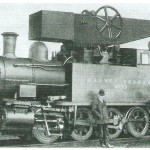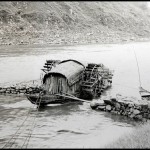- Stacking concrete blocks is a surprisingly efficient way to store energy. [Via John Newman & Nicolas Maigret]
- The social ideology of the motor car (1973 essay).
- Gig economy pressures make drivers ‘more likely to crash‘.
- Rediscovering travel & The trouble with vacations.
- Look up from your screen.
- If solar panels are so clean, why do they produce so much toxic waste?
- The cashless society is a con – and big finance is behind it.
- Raising my child in a doomed world.
- Rise of the machines: has technology evolved beyond our control?
No Tech Reader #19
Fermentation and Daily Life
There is a moment in the life of fruits and vegetables that has always puzzled and fascinated me. Put out a dish of strawberries, and in days some darker spots will appear. Maybe a thin tendril of mold sprouts out from the strawberry’s body. At this point, you can still eat it, simply by cutting off the moldy bit. But all of a sudden, the strawberry has clearly died. It’s inedible, sour. It has passed over in to the world of bacteria, mold, and minerals—it is no longer a self-regulating organism. It has stopped being an individual, but has become multitudes.
How does this happen? When is an organism living, and when is it dead? Where does death come from, and why does this change of state happen so quickly? Amazingly, we’ve developed some techniques to play with this boundary between life and death, stretch it, and blur it. I’m not talking about cryogenic freezing, blood transfusion, lab-grown meat, or any other modern technology. I’m talking about fermentation, the process of controlled decay of living organisms.
From coffee to ketchup, bread to sausage, wine to cheese, fermented foods are all around us. These types of fermentation tend to happen in far-off factories. Coffee berries are fermented before they’re roasted. To make ketchup, tomatoes are puréed en masse, left to rot, then heated to kill the bacteria. We usually don’t get the chance to see for ourselves the transformation of life—into other forms of life.
But you can. In this essay, I talk about fermentation: what makes it so magical, why people are so afraid of it. I talk about some strategies people use to make fermentation part of their daily life, and why modern life makes it so hard to do so. And finally, I speak to the ethics of fermentation—what we can learn from it and how it can help us think differently. [Read more…]
Historical Storage Cellars in Budapest
The Kőbánya district of Budapest is situated on the eastern margins of the Hungarian capital city. Beneath Kőbánya there is an extensive limestone layer, in which tunnels and passages have been made, some of which appear to date from the 13th century. In the 19th century, the limestone caverns of the Hungarian capital city Budapest were used for the refrigeration of perishable goods in large quantities.
This article analyses the architectural development of these evidently low-tech facilities, while also exploring their significant role in the city’s urbanisation. The technical functions and structure of the system of caverns may be useful as a resource for society in the future when the supply of fossil fuels runs out.
The effectiveness of the caverns as place for refrigeration can be demonstrated through climatic calculations. The cavern system has significant energy capabilities, given that there is a constant air temperature throughout the year.
Read more: Pilsitz, Martin, and Zsuzsanna Nádasi-Antal. “Historical storage cellars in Budapest: The architectural history and functional operation of an industrial building in 19th-century Hungary.” Építés-Építészettudomány (2018): 1-20.
How to Dredge Out the Netherlands without Fossil Fuels
The dredging industry has been the backbone of the Dutch economy for centuries. If canals, harbours and rivers weren’t dredged out for a few years, the whole country would literally grind to a halt. Today, dredging happens with oil powered ships. However, the Dutch waterways were dredged mostly by hand for centuries, using simple but ingenious tools. Could it be done again?
Lighthouse Lamps Through Time
“The ingenuity of man is truly amazing and this can easily be seen in the odd collection of techniques used for the illumination of lighthouses across the centuries. Lighthouse illumination began with simple wood fires and progressed through generations of other methods.”
“Even the oil lamp began in simplicity and evolved into a machine with multiple wicks, clockwork oil pumps, specialized chimneys, hydraulic, pneumatic, and other variants. This story will take you through the history of illumination methods in lighthouses.”
Read more: Lighthouse lamps through time, Thomas Tag.
Roman Refrigerators
Archaeologists are trying to definitively establish if mysterious shafts discovered at Switzerland’s extensive Augusta Raurica site in 2013 could have been ancient “refrigerators”. It is likely that the Romans used shafts like the four-metre deep examples at Augusta Raurica – some 20 kilometres from Basel – as cool stores during summer. [Read more…]

